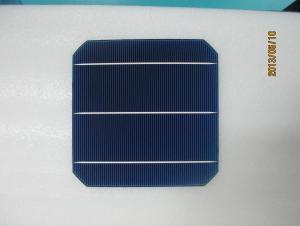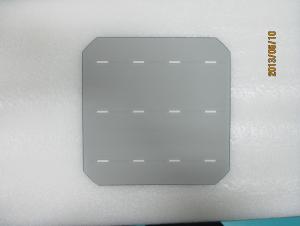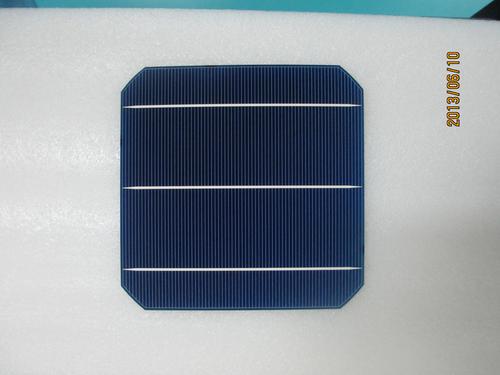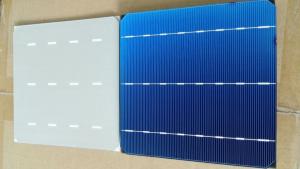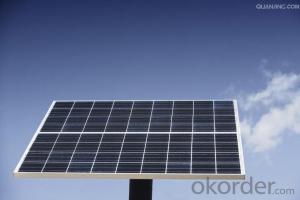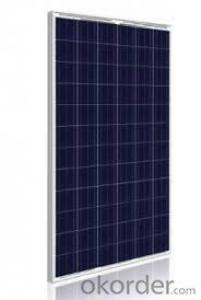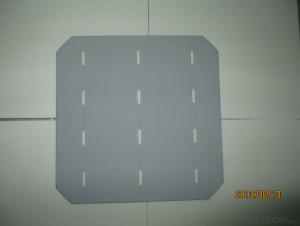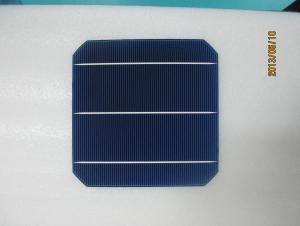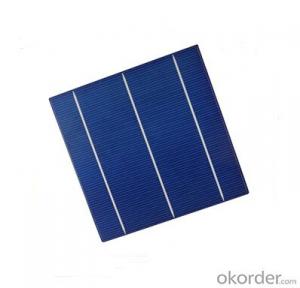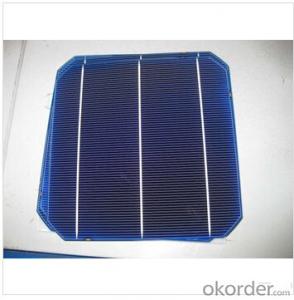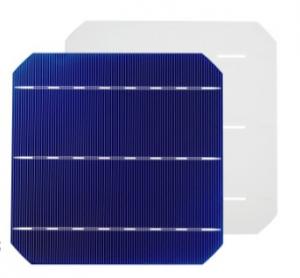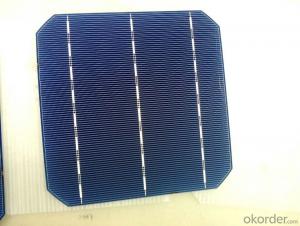Solaero Ztj 156*156mm Monocrystal Solar Cell with High Efficiency
- Loading Port:
- Shanghai
- Payment Terms:
- TT or LC
- Min Order Qty:
- 1000 PCS
- Supply Capability:
- 20000000 PCS/month
OKorder Service Pledge
OKorder Financial Service
You Might Also Like
HIGH EFFICIENCY MONOCRYSTAL SOLAR CELL (156*156MM)
Product Description:
Format: 156mmX15mm + 0.5mm
Thickness: 210 mm ±40 mm
Front (-): 1.5mm bus bars (silver),blue anti-reflection coating (silicon nitride)
Back (+): 2.5mm wide soldering pads (silver) back surface field (aluminum)
Efficiency (%) | Pmpp (W) | Umpp (V) | Impp (A) | Voc (V) | Isc (A) |
18.00% | 4.38 | 0.528 | 8.291 | 0.631 | 8.869 |
Main Product Features:
Product Images:
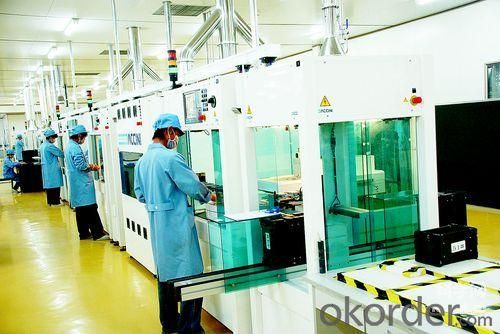
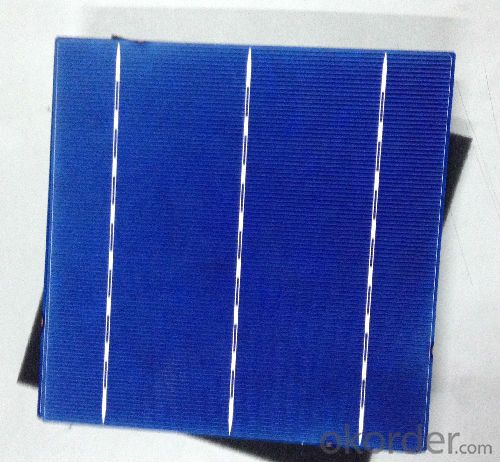
Product Specifications:
Minimum Order Quantity: | 1000 PCS | Unit: | PCS | Loading Port: | Shanghai |
Supply Ability: | 20000000 PCS/month | Payment Terms: | TT or LC |
FAQ:
Q1: Why buy Materials & Equipment from OKorder.com?
A1: All products offered by OKorder.com are carefully selected from China's most reliable manufacturing enterprises. Through its ISO certifications, OKorder.com adheres to the highest standards and a commitment to supply chain safety and customer satisfaction.
Q2: How do we guarantee the quality of our products?
A2: We have established an advanced quality management system which conducts strict quality tests at every step, from raw materials to the final product. At the same time, we provide extensive follow-up service assurances as required.
Q3: How soon can we receive the product after purchase?
A3: Within three days of placing an order, we will begin production. The specific shipping date is dependent upon international and government factors, but is typically 7 to 10 workdays.
Q4: What about payment term?
A4: We accept 30% T/T in advance, with the balance before shipment. L/C at sight is also acceptable. Other payment term can be discussed with specific orders.
- Q: How do solar cells perform in high-pollution areas?
- Solar cells can still perform effectively in high-pollution areas, although their efficiency might be slightly reduced. The presence of pollutants, such as dust or smog, on the surface of the solar panels can block sunlight and reduce the amount of energy they can generate. Regular cleaning and maintenance can help mitigate this issue and ensure optimal performance of solar cells in such areas.
- Q: What is the most common type of solar cell?
- The most common type of solar cell is the crystalline silicon solar cell.
- Q: How do solar cells impact energy security?
- Solar cells have a positive impact on energy security as they provide a reliable and sustainable source of electricity. By harnessing the power of the sun, solar cells reduce dependence on finite fossil fuels, increasing energy independence and reducing the risks associated with fluctuating fuel prices and geopolitical conflicts. Additionally, solar energy can be generated locally, reducing the vulnerability of energy supply chains and enhancing resilience in the face of natural disasters or other disruptions. Overall, solar cells play a crucial role in diversifying the energy mix and enhancing energy security for individuals, communities, and nations.
- Q: What do the solar cell suppliers provide once we purchase the order from the solar cells from them.
- Some of the solar cells suppliers will also provide the construction of the solar cells for your project.
- Q: How do solar cells affect the grid?
- Solar cells affect the grid by generating electricity from sunlight and feeding it into the grid. This has the potential to reduce the demand for electricity from traditional sources, lower carbon emissions, and contribute to a more sustainable and decentralized energy system. However, the intermittent nature of solar power can also pose challenges for grid stability and require the integration of energy storage and smart grid technologies.
- Q: What is the impact of solar cells on reducing water usage?
- Solar cells have a positive impact on reducing water usage as they generate electricity without requiring water for cooling, unlike traditional power plants. This helps conserve water resources and reduces the strain on water supplies, particularly in regions facing water scarcity.
- Q: Can solar cells be used for powering remote data collection devices?
- Yes, solar cells can definitely be used for powering remote data collection devices. Solar cells are a sustainable and reliable source of energy that can be easily integrated into remote locations. They can efficiently convert sunlight into electricity, providing a continuous power supply to data collection devices. This eliminates the need for traditional power sources or frequent battery replacements, making solar cells an ideal solution for remote data collection operations.
- Q: Can solar cells power an entire house?
- Yes, solar cells can power an entire house. With advancements in technology, solar cells are becoming more efficient and affordable. By installing a sufficient number of solar panels on the roof of a house, it is possible to generate enough electricity to meet the energy needs of the entire household, including powering appliances, lighting, heating, and cooling systems. Additionally, excess energy can be stored in battery systems or fed back into the grid for use during cloudy days or at night.
- Q: Can solar cells be used on rooftops with different orientations?
- Yes, solar cells can be used on rooftops with different orientations. While the ideal orientation for maximum energy production is typically south-facing, solar panels can still generate electricity when facing east, west, or even north. However, the energy output may vary depending on the orientation, so it's important to consider factors like shading and angle adjustments to optimize their performance.
- Q: Solar cell life for several years
- Solar battery life of about ten years, the replacement is very convenient. Solar cells, also known as "solar chips" or "photovoltaic cells", is a direct use of solar photovoltaic power semiconductor thin film. As long as it is light to, and instantly can output voltage and in the case of a loop generated current.
Send your message to us
Solaero Ztj 156*156mm Monocrystal Solar Cell with High Efficiency
- Loading Port:
- Shanghai
- Payment Terms:
- TT or LC
- Min Order Qty:
- 1000 PCS
- Supply Capability:
- 20000000 PCS/month
OKorder Service Pledge
OKorder Financial Service
Similar products
Hot products
Hot Searches
Related keywords
